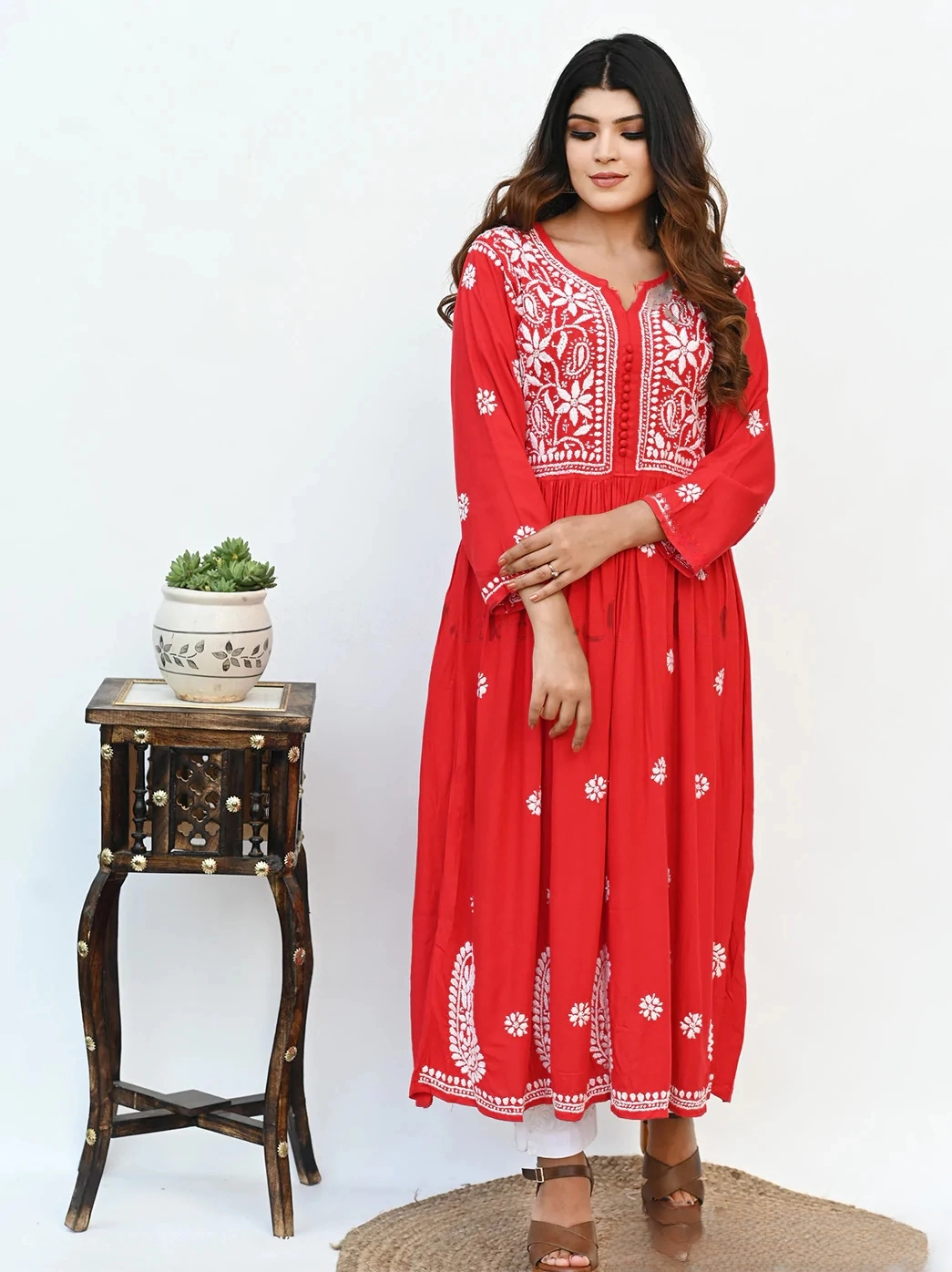The art of Chikankari is famous for its classic embroidery designs on various textiles such as cotton, silk, and others. It is a complete process of creating, designing, and finishing the dress material for a variety of clothing products. Firstly, the designs are aesthetically printed on a clean fabric, and then the process of needlecraft is initiated.
Almost every Indian woman out there may not ignore the elegance and design of a Lucknowi Chikankari suit. But do they know it’s a delicate process requiring years of experience to give those fine details? Likewise, the artisans working on different designs of Chikankari require various tools and equipment for its making.
Check Also: Handcraft Vs. Machine Embroidery
Process of Chikankari Designing
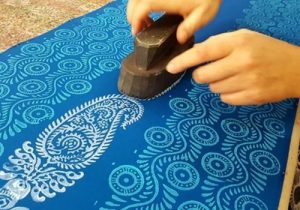
The highly elaborated work of Chikankari is a process that requires simple tools and equipment. These tools help to create beautiful designs on plain cloth and then bring them to life using a different colors of threads.
In the early days of Chikankari manufacturing, the white fabric was used to stitch designs using white thread. As of now, different types of fabric and threads are in use to give a proper blend of modernization with traditional art forms.
Steps involved in the making process of Chikankari –
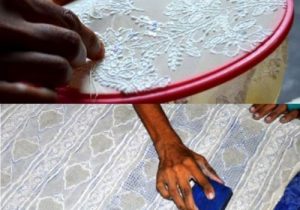
- Fabric Selection
- Block Printing
- Designing & Engraving
- Embroidery or Needlework
- Adding Embellishments
- Washing & finishing touch
Learn that all these steps constitute the finalizing process of creating various products of Chikankari. In general, the quality of work will depend upon how much money you are willing to spend on the final piece.
Tools & Equipment of Chikankari
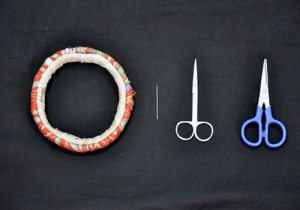
The first and foremost important thing to note is that Chikankari is a highly professional form of art. It takes years for people to learn this art form in order to have skills in this handcrafted work. In addition, there are various steps involved in designing and creating Chikankari.
Alongside, you may come across various finished products of Chikankari. But not all of them will have the same delicate designs as it reflects the artisan’s work history. Therefore, the higher quality of Chikankari work directly relates to the maximum price of the product.
Here is the list of raw materials that are used in the manufacturing of Chikankari –
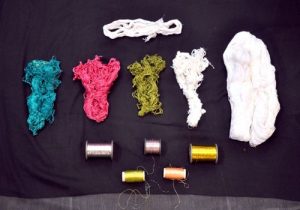
- Various types of fabric material: cotton, silk, georgette, pure chiffon, crepe, etc.
- Cotton or silk thread along with a needle to draw beautiful embroidery over the fabric
- Other categories of threads: gold zari, silver zari, and resham to add extra features to the work
- Designer wooden blocks for printing different patterns on the fabric
- Circular-shaped frame to adjust the cloth in a set place and do not allow it to move
- Scissors and cutters to remove the excess thread while doing needlecraft work
- Blue color ink: to dip in blocks and stamp on the fabric for a layout
- Wash off the ink residue with water after the embroidery work is completed
All these tools are essential for the handcraft work that artisans do in designing Lucknowi Chikankari. In addition, they also have years of knowledge and experience in designing beautiful patterns on fabric using thread and needles. Thus, art requires skills that are not common for any person to learn within a few days.
Check Also: Embroidery & Needle Work: Best Chikankari Handicraft
How to Identify Chikankari?
Though it’s simple to figure out the difference between original Chikankari and another form of fabric designing. Yet, some people may not be able to tell if the piece of work is Chikankari or not.
Furthermore, here are two things that you must keep in mind –
- Take the fabric in hand and closely look if it’s hand work or not
- Secondly, see if the stitches are geometrical patterns or leaf and flower designs
If these points are clear, then it’s for sure a handcrafted Chikankari piece of work. In addition, do not be confuse by seeing a geometrical pattern design, as it’s also a close enclosure of the Chikanakri work. Just make sure that the embroidery work includes different designs and patterns of Lucknowi Chikankari.
Bottom Line
Every piece of real Chikankari work is insignificant from any other art form. Traditionally, the work was highly demanding for white stitches over white fabric. But later, with time and people’s demands, several modifications were upfront in the process. Thus, you can easily go for choosing a Chikankari kurta, saree, or suit depending upon your choice.
Related Articles:
https://aabroochikankari.com/white-chikankari/
https://aabroochikankari.com/steps-of-making-chikankari/
https://aabroochikankari.com/types-of-chikankari/
